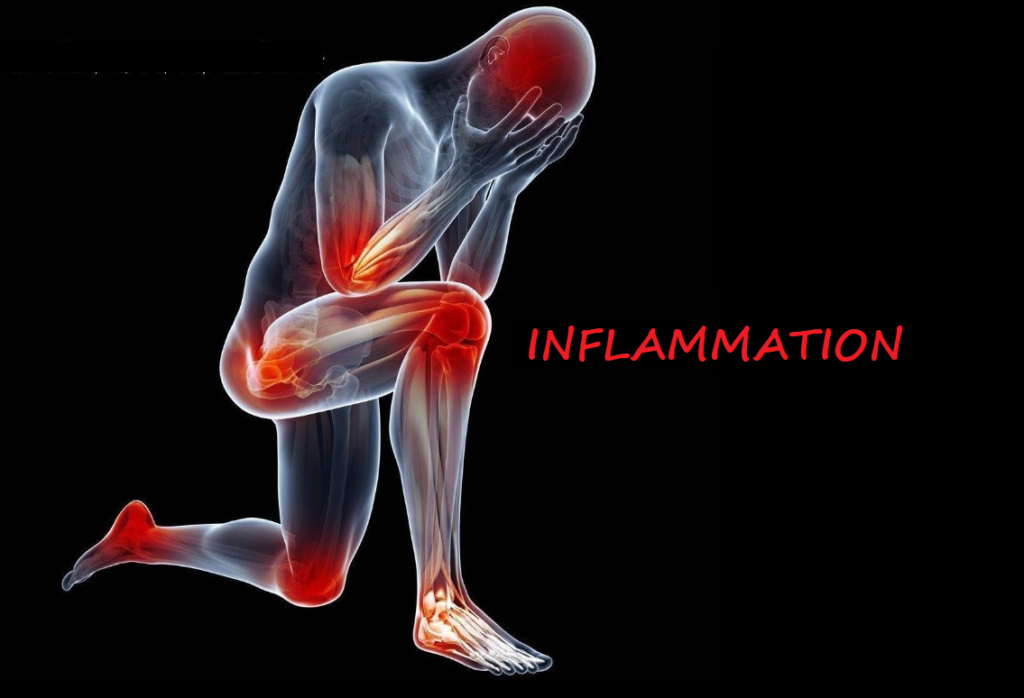 Katherine Hobson | July 21, 2017
Katherine Hobson | July 21, 2017
Chronic, low-level inflammation seems to play a role in a host of diseases, including type 2 diabetes, heart disease, Alzheimer’s, cancer and even depression. And even though the science on inflammation and disease is far from settled, tests and treatments are being promoted that claim to reduce that risk.
That’s even though inflammation is also a force for good, protecting against infection and injury. Acute inflammation occurs when you sprain your ankle or get a paper cut. It’s part of the immune system’s box of tricks to spark a defense and promote healing.
But when that response is constantly triggered, over time it can damage the body instead of healing it. That’s what happens in autoimmune diseases like rheumatoid arthritis. And increasingly, inflammation has been implicated in more common chronic diseases, too, though its exact role hasn’t been nailed down.
There are markers that indicate the presence of systemic inflammation. One of the most researched, high-sensitivity C-reactive protein, can be used to help assess cardiovascular disease risk. One theory is that “bad” cholesterol deposits injure blood vessel walls, setting off an inflammatory response that can lead to the formation of blood clots that cause heart attacks.
But the blood test for the hs-CRP marker isn’t specific, which means it can tell you there’s inflammation going on, but not why it’s happening. It could be an infection, or an autoimmune disease, or that sprained ankle. So it’s not terribly helpful on its own.
“As we confront or deal with a specific medical issue, we usually end up being very focused and precise about the disease process,” says James Li, an allergist-immunologist at the Mayo Clinic. “We don’t look at these conditions globally as inflammation in the body.”
In 2003, the American Heart Association and Centers for Disease Control and Prevention recommended against screening the general public for cardiovascular disease risk using the hs-CRP test. But they said it was a tool that physicians could use in assessing heart disease risk and deciding on a treatment plan, particularly among people who are already at an intermediate risk as gauged by other factors such as age, cholesterol and blood pressure.
For a healthy person with no troubling symptoms or heart disease risk factors, it’s not clear what a test to measure inflammation would add to the lifestyle advice you already know to follow, says Thomas Pearson, a cardiovascular epidemiologist and the executive vice president for research and education at the University of Florida Health Sciences Center and an author of the AHA/CDC recommendations.
It’s also not clear whether targeting inflammation through drugs or lifestyle interventions will in turn reduce the risk of chronic diseases, says Frank Hu, a professor of nutrition and epidemiology at Harvard T.H. Chan School of Public Health. That connection may be tough to parse out. Some anti-inflammatory drugs, NSAIDs, can actually increase the risk of heart disease and stroke. Drugs for diabetes (metformin) and heart disease (statins) seem to combat inflammation, but they have multiple effects, making it hard to tell what’s causing improvements.
The same can be said for diet, says Hu. Some dietary patterns can reduce inflammatory proteins in the blood, but they also have other health benefits, such as promoting a healthy weight and lowering levels of bad cholesterol. It’s hard to dissect which is responsible for an improved health outcome.
That uncertainty aside, the eating patterns associated with lower inflammation are – surprise! – the same ones you probably already know are healthful. That means focusing on fruits, veggies, nuts, fish and healthy oils rather than sugary drinks, processed carbs and processed meats.
The Mediterranean diet, for example, follows that general healthful eating pattern. And the Dietary Approaches to Stop Hypertension (DASH) diet also contains foods linked to lower levels of inflammation. So does the MIND diet, a combination of the two plans that specifically recommends berries and leafy greens. All three eating patterns are associated with a lower incidence of Alzheimer’s disease, and in the case of the MIND diet, the association held even with only moderate adherence. So if the idea of fighting inflammation adds to your motivation to adopt a healthy eating pattern, go for it.
Beyond that, the best advice for reducing any risks posed by inflammation is the same lifestyle advice as is recommended for good health in general. “The best thing you can do to reduce inflammation is to stop smoking,” says Pearson. Also: Stay at a healthy body weight, and get regular exercise, which lowers inflammation over the long term.
“People are always looking for a test and a pill,” says Pearson. “What we need is some good advice and the perseverance to work on our lifestyle.”
Katherine Hobson is a freelance health and science writer based in Brooklyn, N.Y. She’s on Twitter: @katherinehobson.
